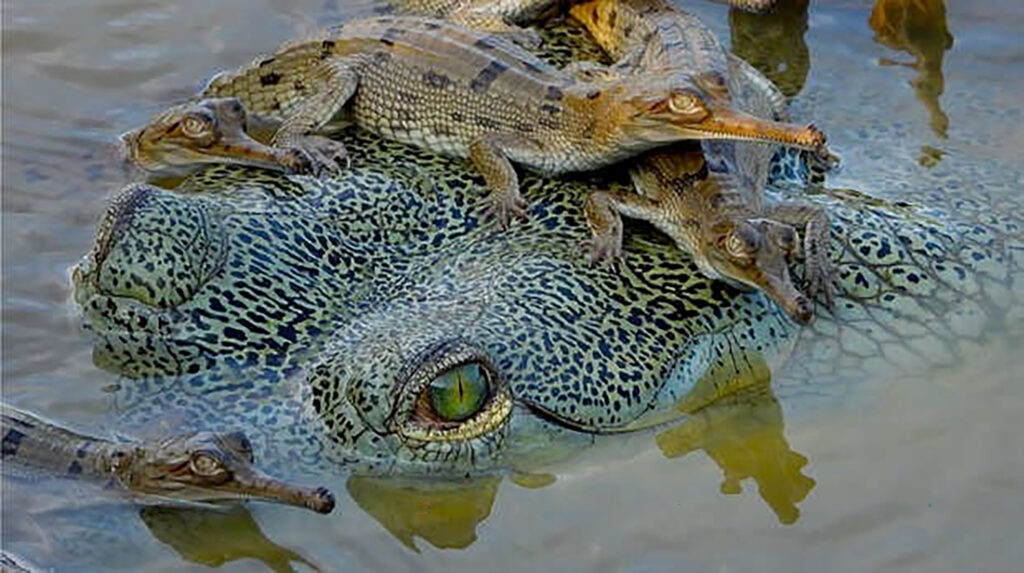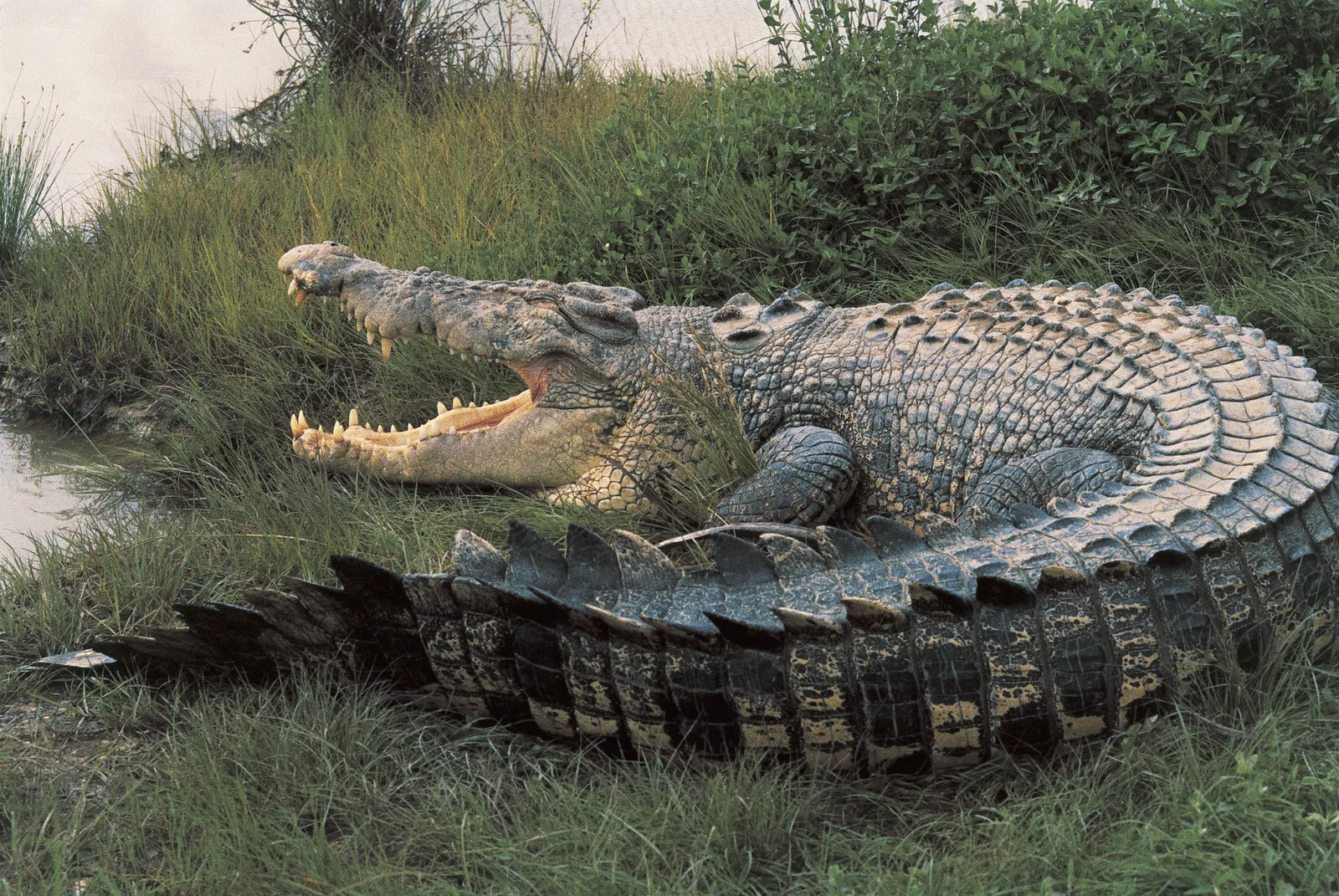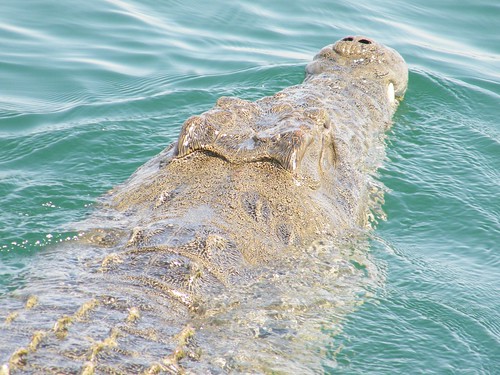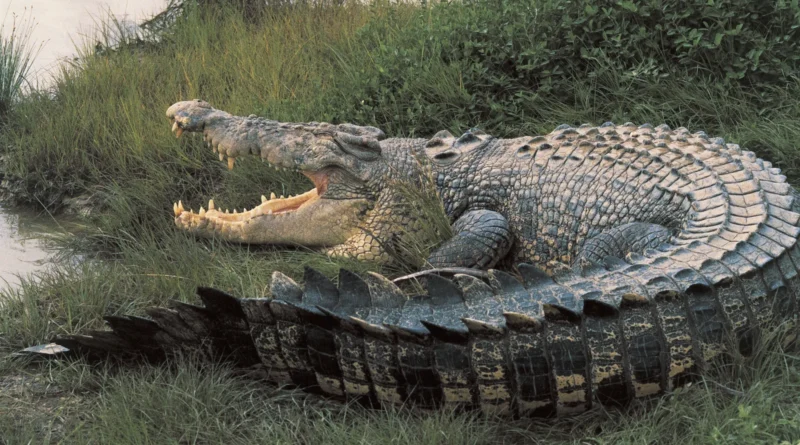Impact of Habitat Loss on Nile Crocodiles
Impact of Habitat Loss on Nile Crocodiles The Nile crocodile (Crocodylus niloticus), one of Africa’s apex predators, is the largest freshwater crocodilian on the continent and plays a vital role in maintaining aquatic ecosystems. These reptiles can be found across a range of habitats, from rivers and lakes to swamps and marshes. As a top predator, they regulate prey populations, contributing to the overall health of their environment. However, as human activities expand, the habitats of Nile crocodiles are increasingly under threat. Habitat loss is emerging as a critical factor affecting the survival and well-being of this species, leading to dire ecological and socioeconomic consequences.
Understanding Habitat Loss

Habitat loss refers to the reduction or degradation of natural environments, making them unable to support the species that rely on them. For Nile crocodiles, habitat loss is primarily driven by human activities such as deforestation, agricultural expansion, urbanization, and infrastructure development. In Africa, large areas of land that once supported crocodile populations are being converted for farming, leaving fewer natural spaces for these reptiles. Additionally, dam construction on rivers such as the Nile has altered the flow and availability of water, further shrinking crocodile habitats.
Here’s a table summarizing key points related to the impact of habitat loss on Nile crocodiles:
| Aspect | Description |
|---|---|
| Species | Nile Crocodile (Crocodylus niloticus) – largest freshwater predator in Africa. |
| Primary Habitats | Rivers, lakes, wetlands, marshes, and deltas across Sub-Saharan Africa and the Nile River basin. |
| Causes of Habitat Loss | Deforestation, agriculture expansion, urbanization, dam construction, climate change (droughts, flooding), pollution, water diversion. |
| Ecological Impact | – Reduced nesting sites impacting breeding. – Disruption in food chain affecting prey availability. – Increased competition for resources. |
| Socioeconomic Impact | – Human-wildlife conflicts over access to water and land. – Economic loss in tourism and fisheries. – Negative effects on local biodiversity and ecosystems. |
| Current Conservation Efforts | – Protected areas and wildlife reserves. – Breeding programs and relocation efforts. |
| Challenges in Conservation | – Lack of funding/resources. – Political/social challenges in law enforcement. – Conflicting human development needs. |
| Potential Solutions | – Habitat restoration (reforestation, wetland rehabilitation). – Community-based conservation (eco-tourism, sustainable fishing). – Strengthening legislation. |
| Importance of Conservation | Ensuring the survival of Nile crocodiles supports ecosystem balance, preserves biodiversity, and mitigates human-wildlife conflict. |
Climate change compounds the problem by affecting water levels and disrupting the delicate balance of wetland ecosystems. Extreme weather events, altered rainfall patterns, and prolonged droughts are leading to the drying up of key habitats, while pollution from human activity degrades water quality and reduces the availability of prey. Collectively, these changes are threatening the critical habitats on which Nile crocodiles depend, including the Nile River basin and various floodplains across Sub-Saharan Africa.
Ecological Impact of Habitat Loss
The loss of habitat has a cascading effect on Nile crocodile populations. One of the most immediate consequences is the reduction of suitable nesting sites. Female Nile crocodiles lay their eggs in sandy riverbanks and marshlands, but habitat degradation reduces the availability of these areas. Without proper nesting grounds, breeding success declines, and fewer young crocodiles survive to adulthood. This leads to a gradual reduction in population numbers.

Moreover, habitat loss disrupts the food chain that sustains Nile crocodiles. As aquatic habitats become polluted or dry up, populations of fish and other prey species decline, leaving crocodiles with fewer food sources. This forces them to expand their hunting territories, which can bring them into conflict with humans and other species that share the same ecosystem. In some areas, the competition for dwindling resources intensifies, leading to increased mortality rates among crocodiles.
Socioeconomic Impact

The effects of Nile crocodile habitat loss extend beyond ecological boundaries, impacting local human populations as well. In many rural African communities, people rely on the same freshwater resources that crocodiles inhabit for drinking water, agriculture, and fishing. As crocodile habitats shrink, encounters between humans and crocodiles become more frequent, leading to conflicts over access to water sources. These conflicts can sometimes result in injury or death for both humans and crocodiles, further straining the relationship between people and wildlife.
Additionally, habitat loss and declining crocodile populations can negatively affect local economies, particularly those dependent on eco-tourism and fisheries. Nile crocodiles are a significant attraction for tourists in many regions, and their decline could reduce tourism revenues. Likewise, the depletion of fish stocks caused by degraded habitats affects commercial and subsistence fishing, further exacerbating economic hardships for communities living near crocodile habitats.
The loss of Nile crocodiles also threatens biodiversity. As apex predators, crocodiles help maintain healthy ecosystems by keeping prey populations in check. Their absence could lead to imbalances in aquatic ecosystems, affecting the overall health and stability of these environments.
Conservation Efforts
Efforts to conserve Nile crocodiles and their habitats are already underway, though significant challenges remain. Several wildlife reserves and protected areas across Africa provide sanctuaries where crocodiles can thrive without the pressures of habitat destruction. In addition, breeding programs and relocation efforts aim to restore crocodile populations in regions where they have been heavily impacted by human activity.
However, these conservation initiatives face numerous obstacles. Many programs suffer from a lack of funding and resources, limiting their effectiveness. Furthermore, political and social challenges can hinder the enforcement of conservation laws and the establishment of new protected areas. Balancing the needs of growing human populations with the protection of wildlife is an ongoing struggle, particularly in regions where poverty and food insecurity are prevalent.
Potential Solutions

Despite these challenges, there are several strategies that could mitigate the impact of habitat loss on Nile crocodiles. Habitat restoration projects, such as reforestation and wetland rehabilitation, can help restore key habitats for crocodiles. Improved water management strategies, including better regulation of dam construction and water flow, can ensure that freshwater ecosystems remain viable for both wildlife and human populations.
Community-based conservation initiatives also offer promising solutions. By involving local communities in sustainable practices, such as eco-tourism and sustainable fishing, it is possible to create economic incentives for protecting crocodile habitats. Educating communities about the ecological importance of Nile crocodiles and promoting coexistence can also reduce human-wildlife conflicts.
Additionally, strengthening legislation and enforcement is crucial for ensuring the long-term survival of Nile crocodile populations. Governments and conservation organizations must work together to enforce laws that protect critical habitats and limit activities that contribute to habitat degradation. International cooperation is also necessary, particularly when managing transboundary rivers like the Nile.
Conclusion
The ongoing loss of habitat poses a significant threat to Nile crocodiles and the ecosystems they inhabit. As their habitats shrink, these apex predators face declining populations, disrupted food chains, and increased conflicts with humans. However, by implementing integrated conservation strategies that involve habitat restoration, community engagement, and stronger legal protections, it is possible to mitigate the impact of habitat loss and secure a future for Nile crocodiles. These efforts are essential not only for the survival of the species but also for the health and balance of Africa’s aquatic ecosystems.
Tips for Understanding Habitat Loss Impact on Nile Crocodiles
Recognize the Role of Nile Crocodiles in Ecosystems
- Nile crocodiles are apex predators, playing a crucial role in regulating prey populations and maintaining ecosystem balance. Understanding this can highlight the broader impact of their decline due to habitat loss.
Understand the Main Drivers of Habitat Loss
- Human activities like deforestation, agricultural expansion, dam construction, and pollution are the main contributors to habitat degradation. Acknowledge these causes to better advocate for change.
Be Aware of Climate Change Effects
- Climate change alters water availability, temperature, and weather patterns, all of which directly impact crocodile habitats. Stay informed about the environmental changes that could affect wildlife.
Focus on Key Habitat Areas
- Conservation efforts should prioritize critical regions such as the Nile River basin, wetlands, and marshlands that are essential for crocodile nesting and feeding.
Promote Coexistence Between Humans and Crocodiles
- Encourage awareness programs that teach communities how to coexist safely with crocodiles, reducing conflicts over water resources and land use.
Support Community-Based Conservation Initiatives
- Involvement of local communities in conservation efforts can lead to sustainable protection of habitats. Eco-tourism and sustainable fishing practices are examples of initiatives that benefit both wildlife and local populations.
Advocate for Stronger Legislation
- Strong environmental protection laws, enforcement, and international cooperation are vital for addressing habitat destruction on a larger scale. Advocacy can support the protection of critical habitats.
Consider the Long-Term Impact
- Protecting Nile crocodile habitats helps preserve biodiversity and ensures the sustainability of entire ecosystems, which benefits both wildlife and human populations.
Participate in or Support Conservation Projects
- Contributing to or volunteering with wildlife reserves, breeding programs, and habitat restoration projects can help mitigate the effects of habitat loss and aid in the recovery of crocodile populations.
Stay Informed and Raise Awareness
- Keep up-to-date with conservation news and share knowledge about the importance of crocodiles and their ecosystems to inspire action in your community or network.
Frequently Asked Questions
What is causing habitat loss for Nile crocodiles?
Habitat loss for Nile crocodiles is primarily caused by human activities such as deforestation, agricultural expansion, urbanization, and the construction of dams. Climate change also plays a role by altering water availability and leading to droughts or floods that disrupt crocodile habitats.
Why is habitat loss a threat to Nile crocodile populations?
Habitat loss reduces the availability of key resources like nesting sites, food, and shelter. Without suitable habitats, Nile crocodiles face challenges in reproducing and finding enough food, which leads to population declines. Habitat degradation also increases competition with humans and other species for dwindling resources.
How does habitat loss affect the overall ecosystem?
As apex predators, Nile crocodiles play a vital role in maintaining ecosystem balance by controlling prey populations, such as fish and smaller animals. When crocodiles are removed from the ecosystem due to habitat loss, it can lead to overpopulation of certain species, disrupting the food chain and causing imbalances that affect biodiversity.
What are the socioeconomic impacts of habitat loss for local communities?
Habitat loss for Nile crocodiles often leads to human-wildlife conflicts over water and land use, especially in regions where people depend on freshwater resources for agriculture, drinking, and fishing. Additionally, declining crocodile populations can negatively affect eco-tourism and fisheries, which are important sources of income for many communities.
Are there any current conservation efforts to protect Nile crocodiles?
Yes, several conservation efforts are in place, including the creation of wildlife reserves, protected areas, and breeding programs aimed at restoring crocodile populations. Some conservation projects also focus on habitat restoration, such as reforestation and wetland rehabilitation, to improve the environment for Nile crocodiles.
What challenges do conservation programs face?
Conservation programs face challenges such as lack of funding, limited resources, and difficulties in enforcing conservation laws. Political and social factors, such as competing land use for agriculture and development, also make it difficult to prioritize habitat protection. Engaging local communities in conservation efforts is key to overcoming these obstacles.
How can local communities help in protecting Nile crocodiles?
Local communities can participate in conservation by adopting sustainable practices such as eco-tourism and sustainable fishing. Educating people about the importance of Nile crocodiles in ecosystems and promoting coexistence can also reduce human-wildlife conflicts. Involving communities in habitat restoration efforts is another way to help protect these reptiles.
How does climate change affect Nile crocodile habitats?
Climate change can significantly impact Nile crocodile habitats by causing changes in water levels, droughts, or flooding, all of which can disrupt nesting and feeding grounds. Warmer temperatures may also alter the reproductive success of crocodiles since temperature plays a role in determining the sex of their offspring.
What are some potential solutions to mitigate habitat loss for Nile crocodiles?
Potential solutions include habitat restoration projects, such as wetland rehabilitation and reforestation, improved water management strategies, and community-based conservation initiatives. Strengthening environmental legislation and international cooperation to protect transboundary rivers like the Nile is also essential to mitigating habitat loss.
How does protecting Nile crocodile habitats benefit other species?
Protecting the habitats of Nile crocodiles helps preserve entire ecosystems, benefiting other species that share the same environment. By ensuring that water sources and wetlands are healthy, other animals, including fish, birds, and mammals, also thrive, leading to a more biodiverse and stable ecosystem.
